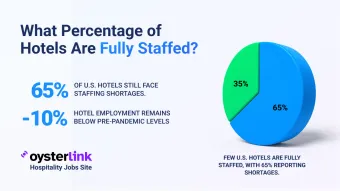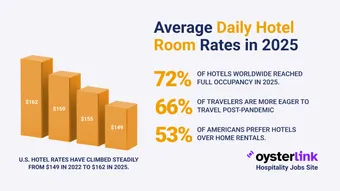Albany, NY Cost of Living: Quick Takeaways
- Housing Costs: Rental prices for a one-bedroom apartment in Albany have grown steadily, reaching approximately $1,350 in 2025.
- Transportation Expenses: Public transit fares average $1.50 per ride with monthly passes around $60. Fuel costs are about $3.36 per gallon.
- Healthcare Costs: Monthly employer-sponsored health insurance premiums are roughly $140, with Silver plan premiums near $600.
- Income Levels: Median household income in Albany for 2025 is approximately $60,000, with a cost of living about 5% higher than the national average.
Albany, the capital city of New York, offers a unique blend of urban amenities and rich history. Assessing its cost of living helps residents and newcomers understand financial expectations.
This article provides an in-depth analysis of living expenses in Albany for 2025, covering housing, utilities, transportation and more.
1. Housing Costs in Albany, NY
Housing is a major factor in Albany's cost of living. Below is a historical look at average rent prices for a one-bedroom apartment:
- 2010: Approximately $900
- 2015: Around $1,050
- 2020: Approximately $1,200
- 2024: Reached $1,300
- 2025: Estimated at $1,350
These figures reflect a steady upward trend in rental costs within the city.
2. Homeownership and Real Estate Trends in Albany, NY
For prospective homeowners, housing prices have similarly seen increases over the years:
- 2010: Median home price was about $173,300
- 2015: Rose to roughly $186,500
- 2020: Approximately $213,400
- 2024: Climbed to $253,100
- 2025: Projected around $280,000
The real estate market in Albany continues to appreciate, showing healthy growth for buyers and investors alike.
Employers in the hospitality sector looking to hire can benefit from understanding local economic conditions as explained in our hospitality real estate market trends.
3. Transportation Expenses in Albany, NY
Albany offers multiple transportation options:
- Public Transit: Standard one-way fare is about $1.50, with monthly passes costing roughly $60.
- Fuel Costs: Average gas price is around $3.36 per gallon as of 2025.
- Vehicle Maintenance: Annual upkeep typically averages $1,200.
Overall transportation expenses vary based on commuting choices and vehicle usage.
4. Utility Costs in Albany, NY
Monthly expenses for utilities in an average apartment typically include:
- Electricity: Approximately $198.98
- Internet Services: Around $60.00
- Total Utilities: About $258.98 per month
These costs are influenced by household size and consumption habits.
5. Grocery and Food Expenses in Albany, NY
Albany residents generally spend about $350 monthly per person on groceries.
Dining out costs vary:
- Casual Meal: Around $15
- Mid-Range Restaurant Meal: About $50
Food expenses align with the city's overall cost of living.
If you operate a restaurant or bar in Albany, you might find useful strategies for boosting your staff hiring and retention efforts outlined in restaurant staff hiring.
6. Healthcare Costs in Albany, NY
Healthcare expenditures include insurance premiums and out-of-pocket costs.
- Employer-Sponsored Health Insurance: Approximately $140 monthly
- Silver Plan Monthly Premium: Around $600
These amounts depend on coverage plans and individual needs.
7. Educational Expenses in Albany, NY
Albany offers a range of schooling options:
- Public Schools: Funded by taxes with no direct tuition costs.
- Private Schools: Average tuition is about $10,000 annually.
- In-State University: Tuition estimated at $7,000 per year.
Families should evaluate options based on preferences and finances.
8. Entertainment and Leisure in Albany, NY
Residents enjoy various entertainment choices with associated costs:
- Movie Ticket: Approximately $13.67
- Gym Membership: Around $50 monthly
- Mid-Range Restaurant Meal: Roughly $50
Annual expenses for entertainment and personal care contribute to quality of life.
9. Taxes and Miscellaneous Fees in Albany, NY
Albany's tax environment includes:
- State Income Tax: Ranges from 4% to 8.82%
- Sales Tax: Total is approximately 8%
- Property Tax Rate: Estimated at 1.5%
These taxes impact both residents and businesses in the area.
10. Childcare and Family Expenses in Albany, NY
Childcare costs are important for families with young children:
- Daycare: Approximately $1,000 monthly
- After-School Programs: Around $300 monthly
- Extracurricular Activities: Estimated $100 monthly
Budgeting for these costs is vital for family financial planning.
11. Clothing and Personal Care in Albany, NY
Personal expenses generally include:
- Clothing: Around $100 monthly
- Personal Care Products and Services: Approximately $50 monthly
These expenditures vary based on individual lifestyle choices.
12. Insurance Costs in Albany, NY
Insurance premiums contribute significantly to living costs:
- Health Insurance: Monthly premium around $600 for Silver plans
- Auto Insurance: Average annual premium close to $1,200
- Homeowners Insurance: Approximately $1,000 annually
- Renters Insurance: Around $200 annually
These costs provide crucial financial protection.
13. Miscellaneous Expenses in Albany, NY
Additional costs impacting overall expenses include:
- Entertainment: About $2,400 annually
- Personal Care Services: Roughly $600 annually
- Miscellaneous Goods and Services: Estimated at $700 annually
These vary widely depending on personal preferences.
14. Income and Salaries in Albany, NY
Median household income levels offer insight into earning capacity:
- 2010: About $45,500
- 2015: Roughly $52,583
- 2020: Approximately $54,736
- 2023: Around $59,485
- 2025: Estimated at $60,000
Income trends have grown steadily in line with regional economic conditions.
For professionals seeking hospitality positions such as bartenders or servers in Albany, understanding salary expectations can be critical; see top paying restaurant jobs for more details.
15. Comparison with National Averages
Comparing Albany's expenses with national figures highlights affordability:
- Overall Cost of Living: About 5% higher than the U.S. average
- Housing: Roughly 4% above national levels
- Utilities: Approximately 2% lower than average
- Food: Around 3% higher
- Healthcare: About 2% lower
- Transportation: Roughly 4% higher
- Goods & Services: 10% above the national average
These differences provide context for budgeting and lifestyle choices in Albany.
Our Methodology for Albany Cost of Living Figures
To compile cost of living data for Albany, we utilize multiple reliable sources, including government databases, market research platforms and statistical services. When exact data is unavailable, careful estimation methods are applied to ensure accuracy.
Albany Cost of Living: Conclusion
The cost of living in Albany, NY in 2025 reflects a moderate increase across many categories such as housing, transportation and groceries. While certain expenses like utilities and healthcare remain slightly below national averages, others are somewhat higher.
Income levels have risen steadily, though the overall cost remains above the average U.S. city, requiring thoughtful planning for those residing or relocating here. Understanding these detailed components helps individuals manage finances effectively within Albany's living environment.
Employers and hospitality professionals may also benefit from reading about how to hire a restaurant manager to build strong teams in their establishments.







Loading comments...